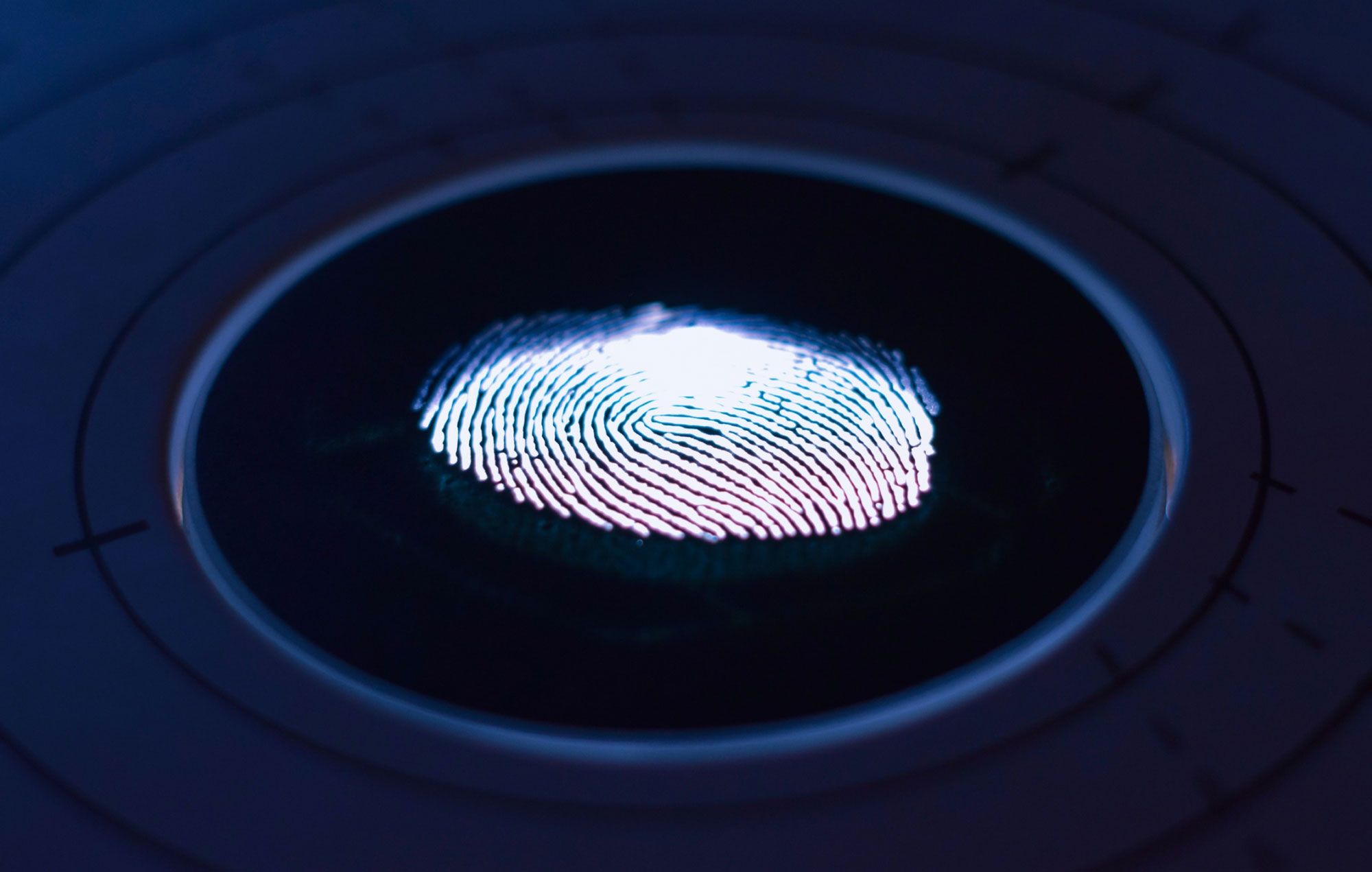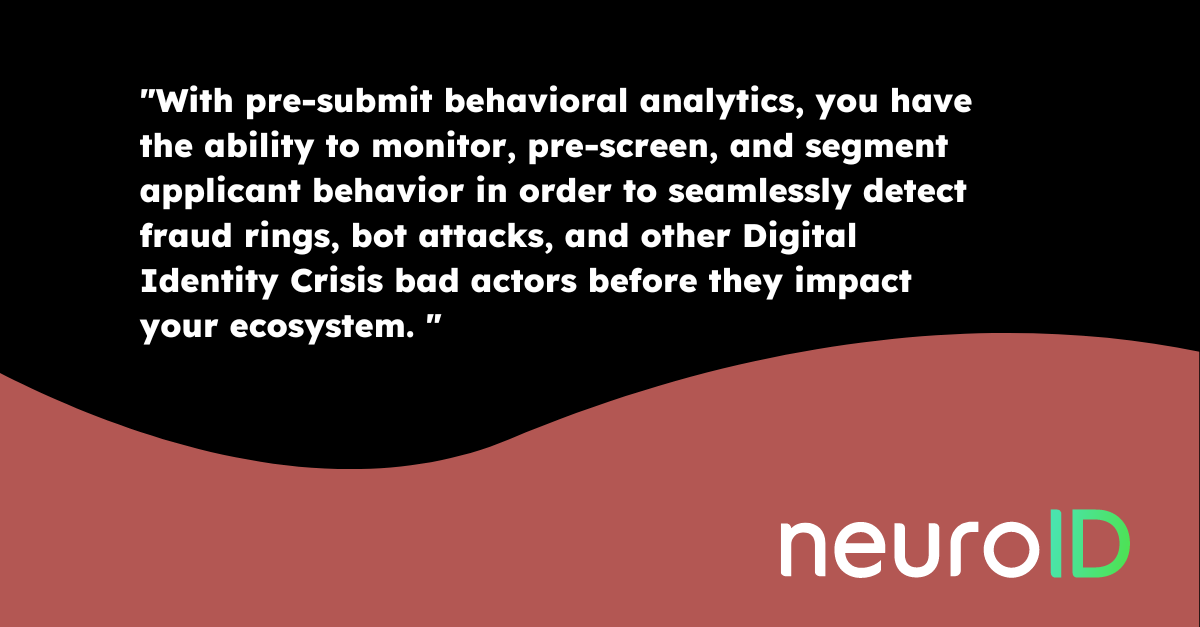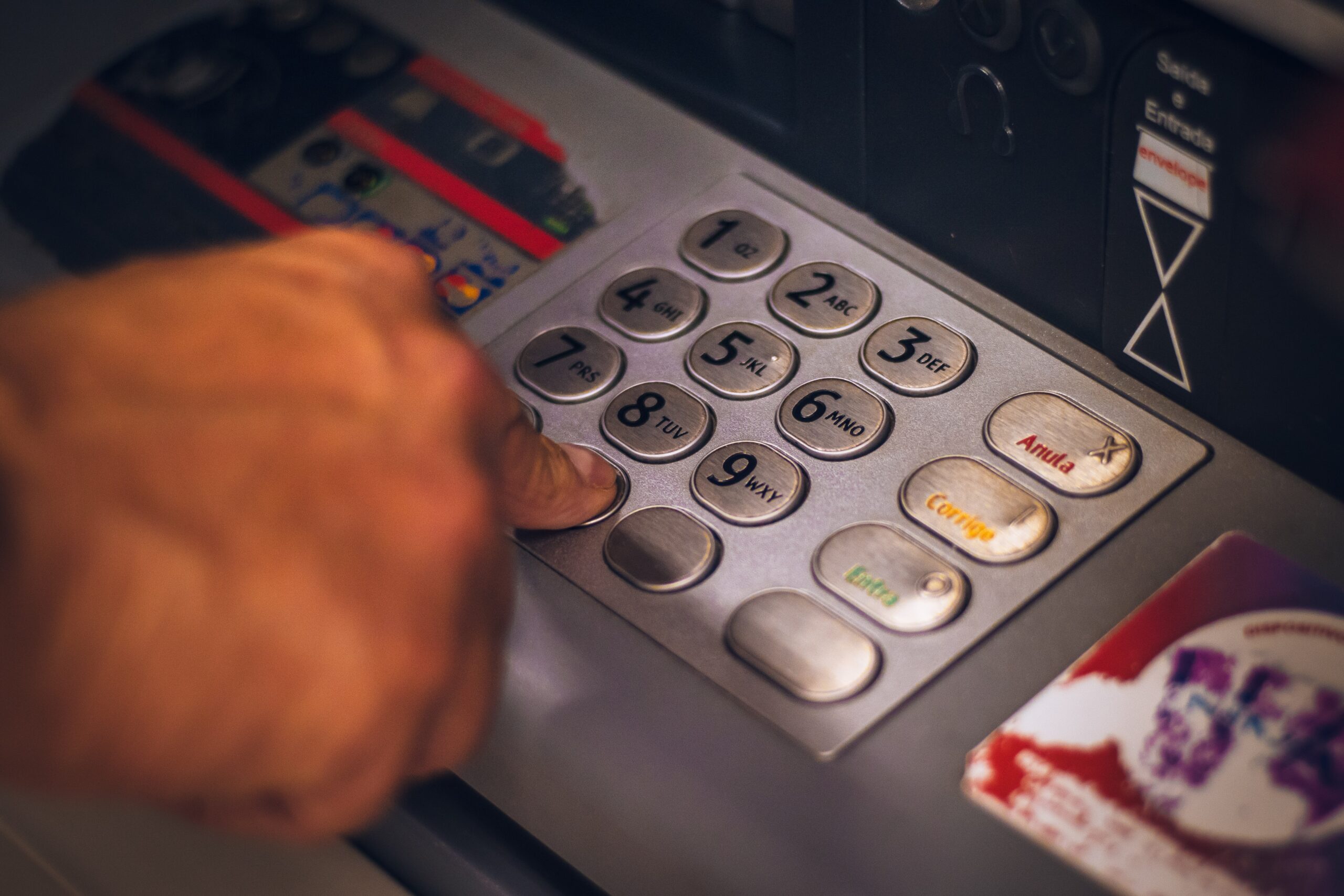
Identity & Intent: The Dual Roles of Biometrics and Behavioral Analysis in Your Fraud Stack
Biometric technology collects fingerprints, retinas, face scans, and other unique identifiers in an attempt to tie unchangeable physical traits to a singular individual identity, thus creating a reference point to the physical within the digital. It’s a highly valuable reference point to have, both for accuracy and safety: hackers can steal your email address much easier than they can replicate your fingerprint.
Behavioral analytics, which interpret human-digital interactions, without tying those interactions to a singular identity, are often confused for biometrics. And while they share the advantages of inherent security and attachment to human traits or actions, biometrics and behavioral analytics are fundamentally different. The risks associated with biometrics don’t necessarily apply to behavioral data, and behavioral data is suited to purposes that biometrics alone cannot address. Understanding the differences in risk and rewards associated with each is vital to making the best decision for fraud prevention at various stages of customer interactions.
Biometrics or Biomet-risk? New Use Cases = New Vulnerabilities
The concept of biometrics is not new. Digitization, however, has ushered in a new era of use cases for biometrics. Activities ranging from everyday payments to customs and border control use biometric scans to verify individuals’ identities. We’ve even seen the emergence of projects such as Worldcoin, which want to standardize identity globally with the help of eyeball scans.
These advancements haven’t come risk-free.
- Privacy Risks: biometric data is inherently personal and irreplaceable. If your fingerprint is spoofed, it can’t be replaced. And the more we rely on it, the more exposed we are if it’s breached.
- Data Security: the physical features (your eyes, hands, face) are securely attached to your physical body . . . but biometrics turn those features into matchable data. Data breaches are incredibly common.
- Scalability and Accuracy: biometric edge cases continue to pose a challenge, and AI is getting better at fooling systems every day. Staying one step ahead of AI will require tradeoffs.
There’s no doubt that biometrics offer convenience—just look at the average smartphone user who relies on biometrics to unlock their device 150 times each day. But consumers simply aren’t ready to fully trust these technologies when put into third-party hands.
A 2023 survey by Paysafe Group revealed that:
- 81% of consumers still prefer passwords over biometrics for online payments.
- 56% of consumers worry that biometrics carry greater fraud risk than passwords.
- 45% of consumers don’t want companies to access their biometric data at all.
As these stats show, public opinion is not fully onboard. And understandably so. Biometrics essentially act as a shortcut for identity verification, and cutting corners when it comes to fraud, security, or identity makes people nervous.
Behavior: How You Act, Not Who You Are
Behavioral analytics as a field is not nearly as well-known as biometrics and is often confused as providing the same level of legal risk and data requirements as biometrics.
While biometrics verify the physical traits that connect a user to a specific identity, behavioral analytics allow you to understand the mindset under which a user is engaging with your app or website.
Behavioral analytics provide answers to questions such as:
- Is the user behaving as you would expect them to, if they were legitimate?
- Is the user exhibiting any obvious red flags when it comes to how they’re interacting with your app/site?
- Has this same user interacted with your app/site under a different identity?
- Does the user seem familiar with the information they’re providing?
Although it’s examining some of the same behavioral biometric data points, such as typing patterns, what behavioral analytics are looking for and doing with the information it finds is entirely different.
Being able to answer questions about mindset and intent using data can enable you to rule out a large portion of bad actors. Because behavioral analytics can be applied at any point in the user journey—rather than identity verification or authentication, which is where biometrics excels—it can act as a catch-all defense against some of the most damaging varieties of fraud (such as synthetic identity fraud, bots, or fraud ring attacks).
Behavioral analytics tools address intent and mindset questions by logging keystrokes, monitoring mouse movements, or observing browsing patterns. These observations are then compared against a vast data set of both legitimate and illegitimate user journeys to inform decision-making.
Firms can use both biometrics and behavioral data to make inferences about the digital world based on data from the physical world. Understanding the full benefits of each is key to unlocking the most useful data at each stage of your customer identification journey.
Download our report, Biometrics and Behavioral Analytics Explained: From Myths to Mandates to learn more about how these two exciting technologies can work together to deliver certainty and security at scale.




